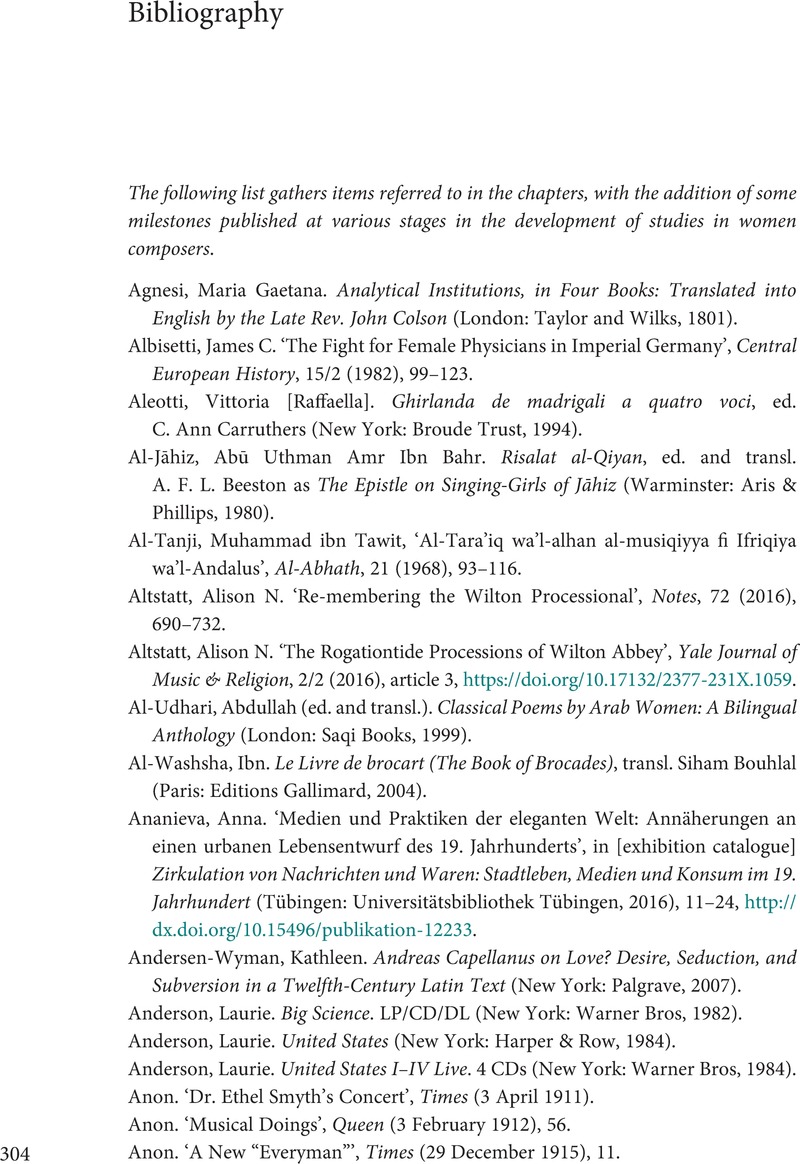Book contents
- The Cambridge Companion to Women Composers
- Cambridge Companions to Music
- The Cambridge Companion to Women Composers
- Copyright page
- Dedication
- Contents
- Figures
- Music Examples
- Contributors
- Acknowledgements
- Abbreviations
- Prologue
- Part I Themes in Studying Women Composers
- Part II Highlighting Women Composers before 1750
- Part III Women Composers circa 1750–1880
- Part IV Women Composers circa 1880–2000
- Bibliography
- Index
- References
Bibliography
Published online by Cambridge University Press: 23 May 2024
- The Cambridge Companion to Women Composers
- Cambridge Companions to Music
- The Cambridge Companion to Women Composers
- Copyright page
- Dedication
- Contents
- Figures
- Music Examples
- Contributors
- Acknowledgements
- Abbreviations
- Prologue
- Part I Themes in Studying Women Composers
- Part II Highlighting Women Composers before 1750
- Part III Women Composers circa 1750–1880
- Part IV Women Composers circa 1880–2000
- Bibliography
- Index
- References
Summary

- Type
- Chapter
- Information
- The Cambridge Companion to Women Composers , pp. 304 - 340Publisher: Cambridge University PressPrint publication year: 2024



